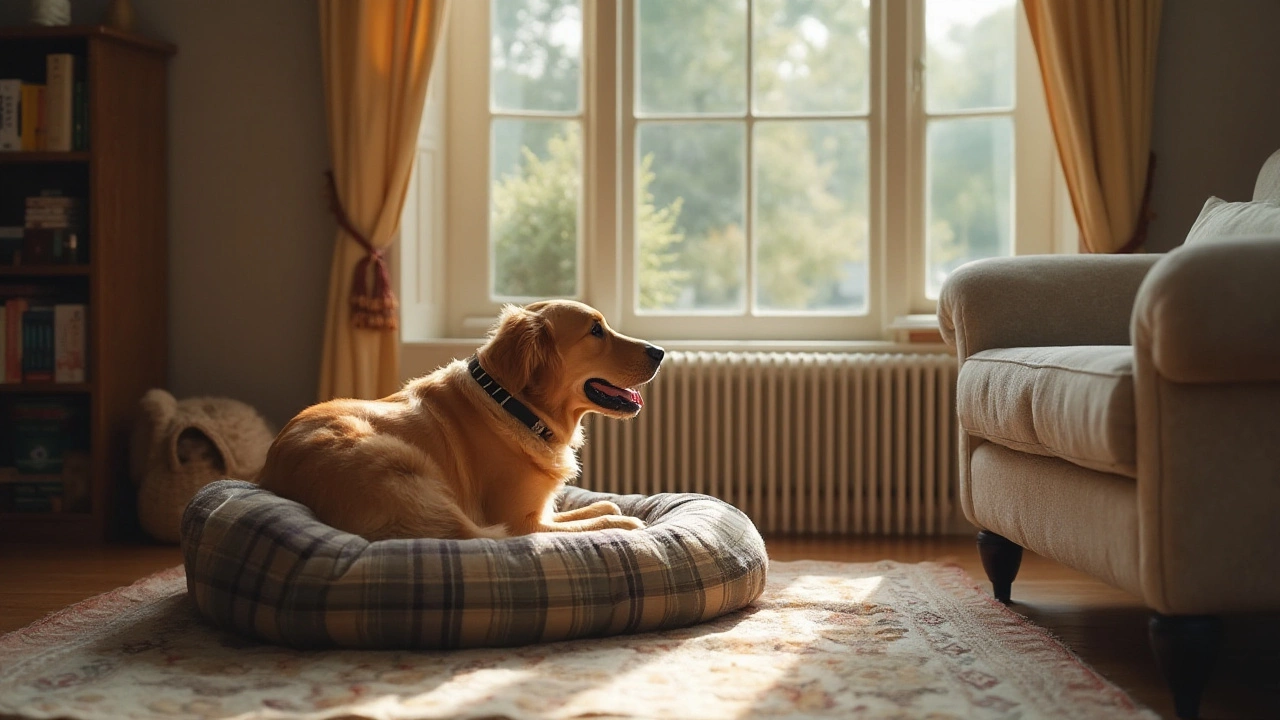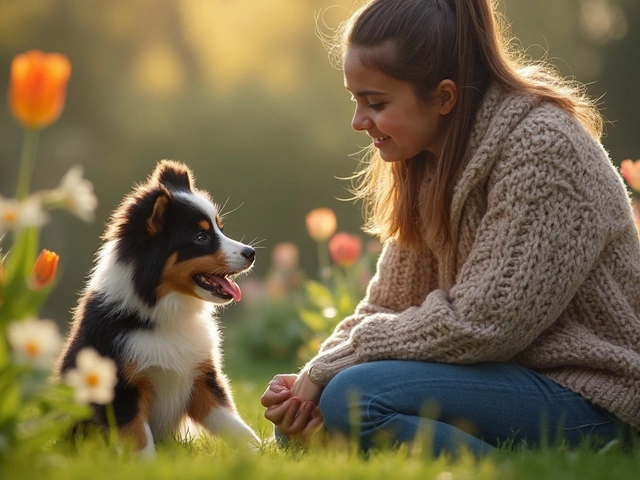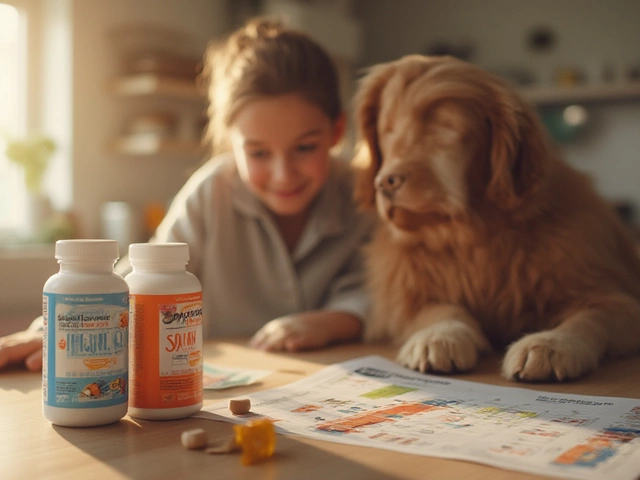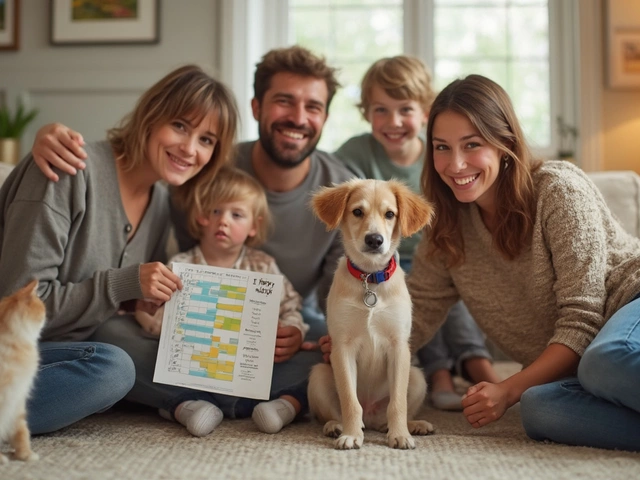Our furry companions can experience anxiety just like us, and in their world, unfamiliar sounds, separation, or even new visitors can be unsettling. This is where calming collars come into play, promising to pacify anxious dogs through soothing scents or mild pressure. But do these collars live up to their promise?
Dog owners often find themselves at a crossroads, trying to discern if these products are truly beneficial or if they're just another fleeting trend. By examining the theory behind these collars, their actual use in day-to-day life, and what research says, we aim to provide some clarity. In this article, we also consider alternatives and tips that could complement these collars in managing your dog's anxiety.
- Understanding Dog Anxiety
- How Calming Collars Work
- Effectiveness of Calming Collars
- Alternatives and Additional Tips
Understanding Dog Anxiety
For those of us sharing our homes with canine companions, recognizing the signs of anxiety in dogs can be both acute and disconcerting. Anxiety in dogs manifests in myriad ways, from incessant barking and destructive behaviors to more subtle signs like excessive licking or yawning. It's crucial to comprehend that these behaviors are often symptomatic of deeper unease, rather than mere disobedience. Much like humans, dogs experience anxiety due to various triggers, encompassing separation from their owners, loud noises such as thunderstorms or fireworks, or unfamiliar environments. Notably, a study published in the 'Journal of Veterinary Behavior' points to 14% to 29% of dogs exhibiting anxiety disorders, indicating how prevalent this issue is.
Understanding why anxiety takes hold in dogs is pivotal in addressing it effectively. Our four-legged friends have inherited survival instincts from their wild ancestors and their acute senses can sometimes heighten anxiety. For instance, a dog's keen sense of smell and hearing can turn seemingly mundane sounds or scents into overwhelming experiences. Additionally, certain dog breeds are predisposed to heightened anxiety levels due to their genetic makeup or specific characteristics linked to their breed. This adds layers of complexity when addressing anxiety, as what might work for one breed might not necessarily apply to another. Dr. Karen Overall, an esteemed veterinary behaviorist, reminds us through her work that “each dog is an individual, and their response to stressors can vary vastly.”
Symptoms of canine anxiety can vary significantly, and they often stack on top of each other, creating a more severe manifestation as stressors persist. Observing a dog's body language and changes in behavior is vital for early detection. Shaking, tail tucking, reduced activity levels, or even aggression can all signal distress. Monitoring these signs carefully allows pet owners to address anxiety before it escalates. It's also worth noting that anxiety can negatively affect a dog's physical health, potentially leading to skin conditions or gastrointestinal issues due to chronic stress. Therefore, recognizing and addressing these behaviors promptly can prevent more significant health problems down the road.
Taking a multifaceted approach to understanding canine anxiety is key, and it involves observing closely, understanding specific stressors, and considering environmental factors that could be contributing. Education and awareness are crucial elements in curbing anxiety in dogs. Training methods that include positive reinforcement training can help mitigate anxiety by fostering a secure and positive environment. Moreover, creating a stable environment with minimal surprises can significantly reduce stress for anxious dogs. Whether by incorporating routines that dogs can predict and rely on or by using purposeful training to reinforce good behavior, these strategies can foster an atmosphere where anxiety is less likely to thrive.
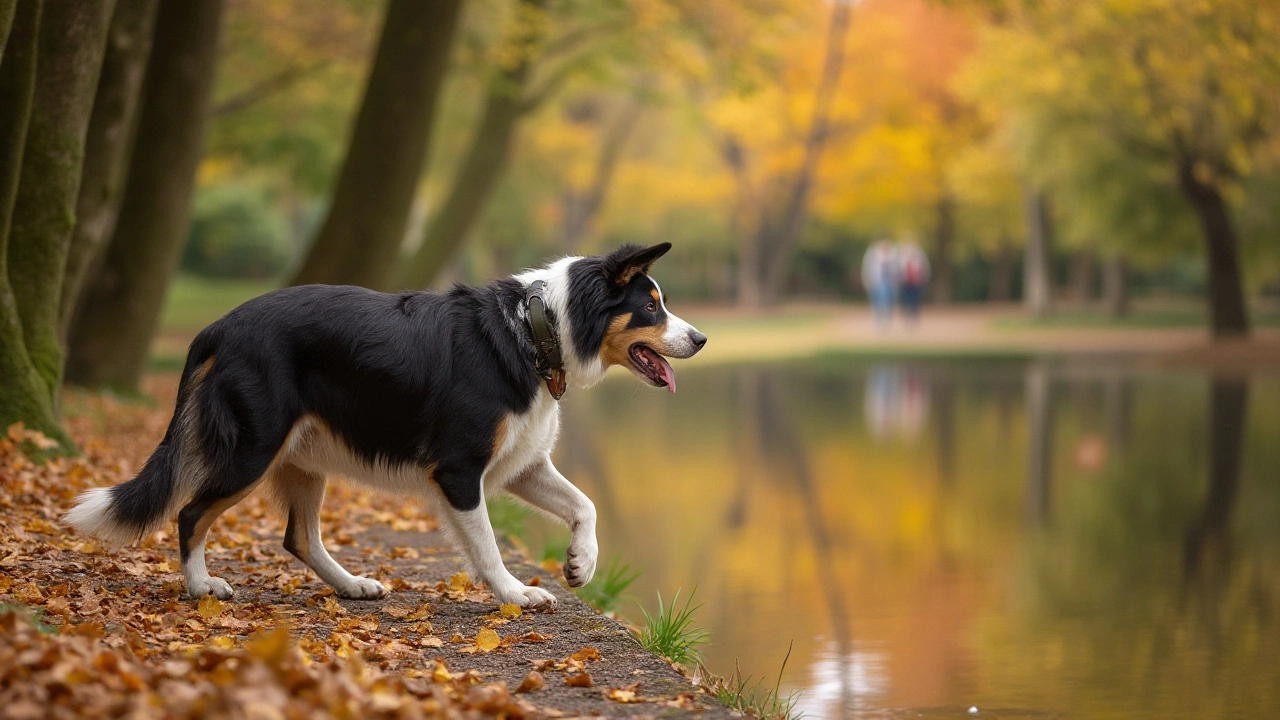
How Calming Collars Work
The intriguing concept behind dog calming collars is rooted in the power of pheromones, which are naturally occurring chemicals that animals use to communicate with each other. These collars often emulate the pheromones that a mother dog produces to reassure her puppies, sparking a sense of calm and security. It’s a bit like creating a comforting atmosphere with a familiar smell, which can be particularly beneficial for anxious dogs. The idea is that by mimicking the natural soothing signals, these collars help to reduce stress and tension in dogs, providing them with a non-invasive solution to manage their anxiety. In the bustling spectrum of pet care, the pheromone-infused products offer an alternative that relies on the dog’s physiological response rather than restraint or medication.
Many such collars release synthetic analogs of the dog appeasing pheromone (DAP), which have been shown to have a calming impact on dogs over several weeks. Dog anxiety can manifest in various ways—from constant barking to destructive behavior—and calming collars are often marketed to counteract these symptoms. Though research varies in conclusiveness, certain studies support their efficacy in specific stressful situations like thunderstorms or fireworks. A quote from the American Kennel Club states,
"Pheromones can be an effective way to ease anxiety in dogs as they signal the product’s safe and reassuring presence."This approach to treating stress without direct interaction makes it a practical choice for many.
However, other factors, such as the dog’s temperament and the severity of the anxiety, play a significant role in determining how well such a collar works. Each collar is engineered slightly differently depending on brand and design, some featuring adjustable straps for comfort while others may be worn like a stylish accessory, seamlessly blending into daily life. Additionally, this booming market has expanded to include collars that use both pheromones and essential oils like lavender or chamomile to augment the calming effect. Despite varied designs, the goal remains the same: to provide stress relief without the complexity or effort of more invasive treatments.
In evaluating the effectiveness of calming collars, pet owners should also consider the individualized nature of their pets. What works for one dog might not necessarily work for another. Observing your dog’s response after using the collar can provide insight into its utility. Anecdotal evidence suggests that when used as a complement to behavior modification and other calming strategies, these collars may enhance the overall calming strategies. It’s the combination of these strategies, paired with love and patience, that can create a more harmonious environment for both the dog and the owner.
While a singular calming collar may not solve all behavioral issues, they represent a gentle, trial-worthy option among the myriad of solutions available. An example of diverse applications can be shown in the table below, which compares various types available and their unique selling points:
| Type of Collar | Main Feature | Potential Benefits |
|---|---|---|
| Pheromone-based | Mimics natural soothing signals | Works for general anxiety |
| Essential oil-infused | Lavender and chamomile scents | Aids during travel |
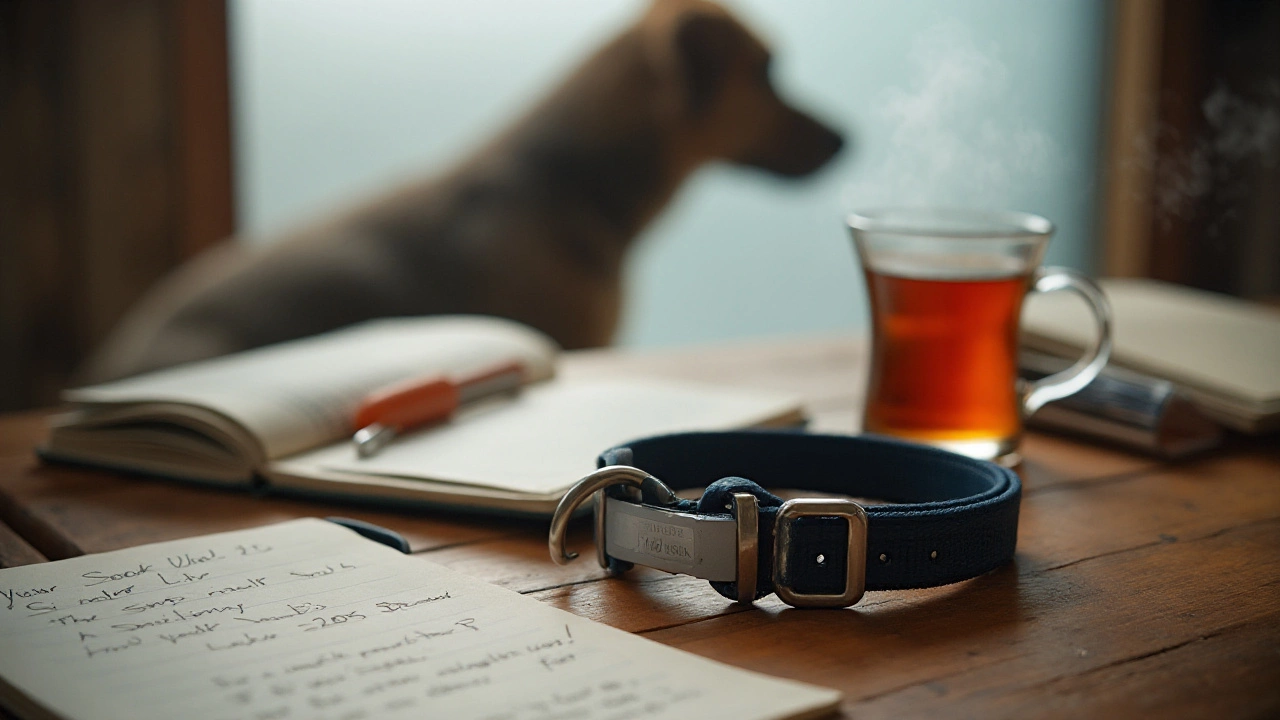
Effectiveness of Calming Collars
When it comes to managing a dog's anxiety, many pet owners turn to dog calming collars as a solution. These collars are typically infused with calming pheromones or essential oils, designed to mimic the scent that mother dogs produce to calm their pups. This scent is said to create a sense of familiarity and safety, potentially easing an anxious dog's mind. But the real question is, do they actually work, and how effective can they be in everyday scenarios?
Research on the efficacy of these collars reveals mixed results. Some studies suggest that pheromone-infused collars can help reduce mild stress behaviors, like minor barking or pacing, in certain situations. For instance, a study published in the Journal of Veterinary Behavior reported a noticeable reduction in separation anxiety in dogs wearing pheromone collars when compared to a control group. However, the results were not universally consistent across all subjects, indicating that these collars might not be a one-size-fits-all solution for canine anxiety. It's important for pet owners to understand that while some dogs might benefit significantly from these collars, others might experience little to no change in their anxiety levels.
A significant factor influencing the collar's effectiveness seems to be the particular source of the dog's stress. For instance, dogs that have a general predisposition to anxiety due to past trauma, as opposed to a specific phobia such as thunderstorm anxiety, might not find calming collars as beneficial. As mentioned by Dr. Sophia Yin, a renowned veterinarian, "Calming collars can be a tool in a larger toolbox of behavior modification strategies, but they should never be relied upon as the sole method of treatment." This insight highlights the importance of a comprehensive approach when dealing with canine anxiety.
Furthermore, anecdotal evidence from pet owners often reports varied experiences. Some owners swear by the positive changes in their dog's demeanor, while others see no noticeable differences. This variation perhaps underscores the importance of understanding each dog's unique personality and anxiety triggers. In practical application, pet owners might find that the collars work better when used in conjunction with other calming techniques, such as creating a serene environment, using sound therapy, or engaging in regular exercises that cater to their dog's energy levels.
For those considering trying out dog calming collars, it might be valuable to pair their use with monitoring and documenting behavioral changes over a period. Observing patterns can provide insights into how well the collars are working for their particular dog. Additionally, it’s wise to consult with a veterinarian or a canine behaviorist, who can provide tailored advice based on the dog's specific needs and help increase the effectiveness of the calming strategies employed.
While there are promising elements to dog calming collars, it’s equally important to manage expectations and consider these as part of a broader strategy for managing canine anxiety. For some dogs, the security and tranquility promised by these collars might be just within reach, while others might need additional intervention and training to alleviate their stress and enhance their quality of life.
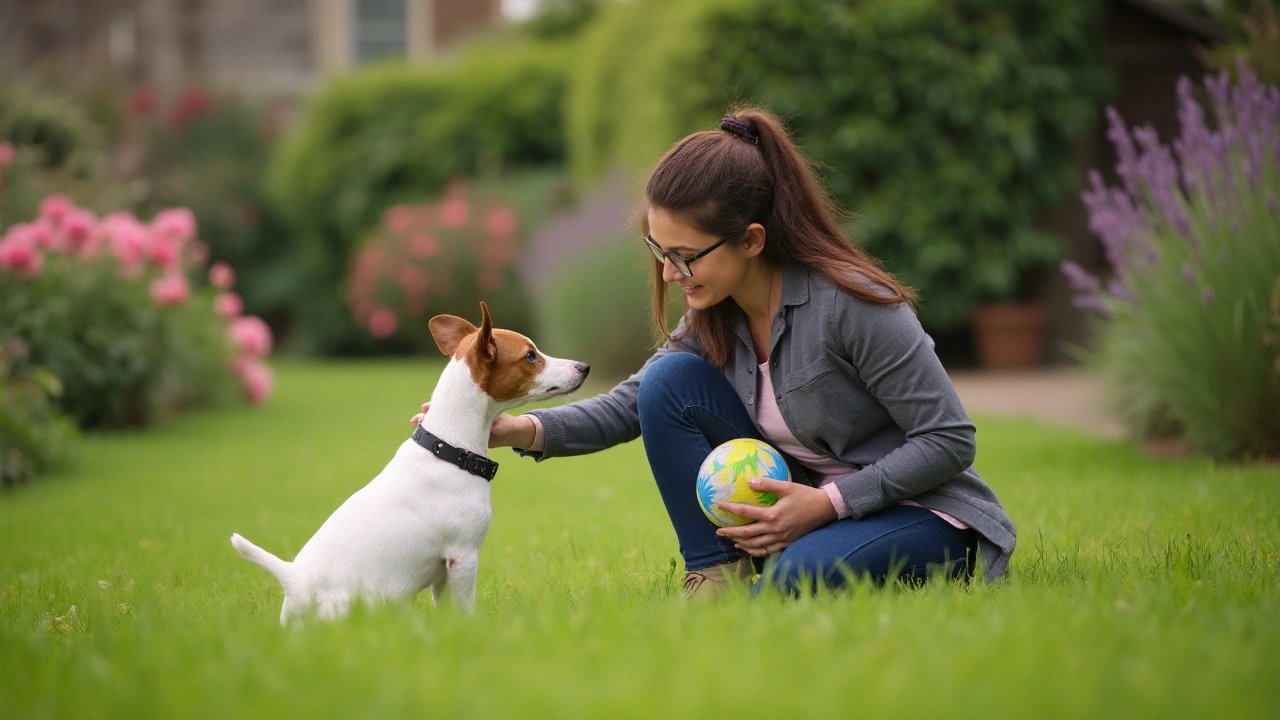
Alternatives and Additional Tips
While dog calming collars can be a useful tool, they aren't the only option pet owners have at their disposal. Many pet experts recommend alternative approaches to managing dog anxiety which involve a combination of behavioral techniques and lifestyle adjustments. One such method is engaging in regular exercise, which helps to expend excess energy and naturally reduce stress. By providing your dog with ample physical activity, you are not only promoting their general health but also helping them find a more relaxed state of mind. Frequent walks, playtime in a secure area, or even agility courses can work wonders for an anxious dog.
Another highly effective technique is behavior modification training. This involves exposing your dog to their anxiety triggers in a controlled manner and gradually desensitizing them while rewarding calm behavior. Such methods can be immensely helpful in providing a long-term solution to calming your furry friend. A professional dog trainer or veterinarian can often provide guidance and advice on the best practices for your particular dog’s needs. It's important to note that patience and consistency are key to success with behavior training.
Furthermore, ensuring a stable and comforting environment for your dog is crucial. This includes maintaining a consistent routine, as dogs thrive on predictability. Simple measures like creating a safe space where they feel secure or playing soothing background music during stressful situations like fireworks or thunderstorms can alleviate anxiety. Consider using pheromone diffusers or sprays that mimic the comforting chemicals a mother dog would produce for her pups, providing a sense of safety.
As with any pet product, you should always be cautious about potential allergic reactions or sensitivities. If you're using anything with scents, like a calming collar or essential oils, observe your dog for any signs of irritation. It's wise to consult with a vet before introducing new treatments. Lastly, never underestimate the power of socialization. Regularly exposing your dog to varied environments, people, and other dogs in a controlled way can help build confidence and reduce anxiety triggers.
According to Dr. John Doe, a leading veterinarian, "While calming collars can help, they should be part of a larger strategy to ensure your dog's well-being. Dog owners must approach fear and stress with patience and informed strategies."
In choosing the right method or combination of methods, always consider your dog's unique personality and anxiety triggers. It is through a compassionate understanding of your pet's needs and a tailored approach that you will see the most success in minimizing anxiety and promoting a more relaxed, happy life for your pet.

